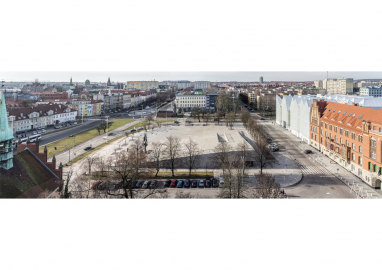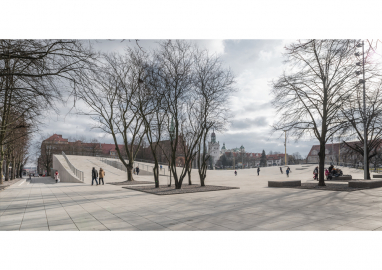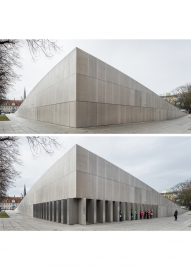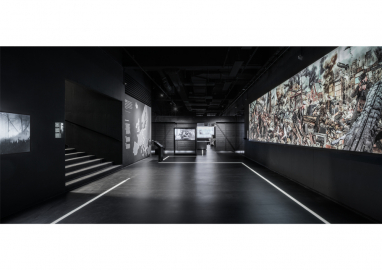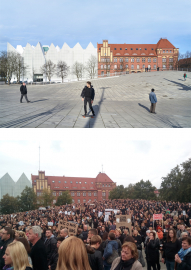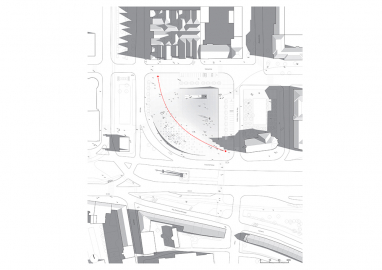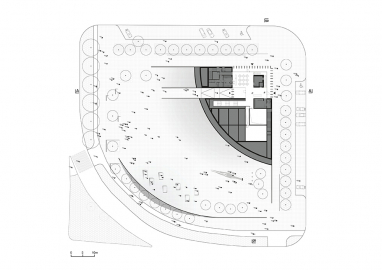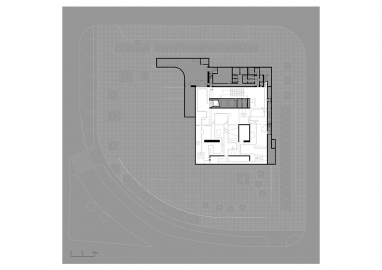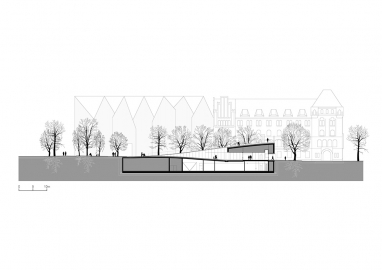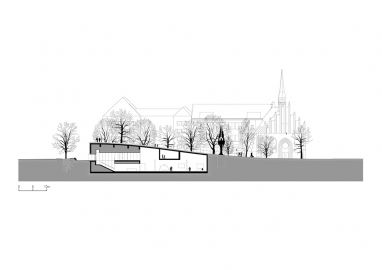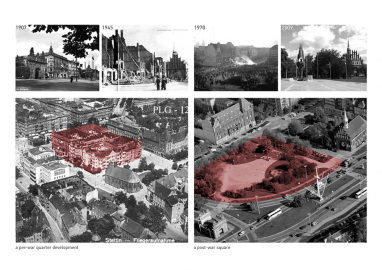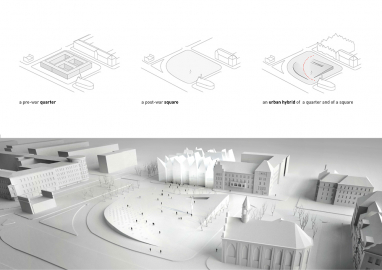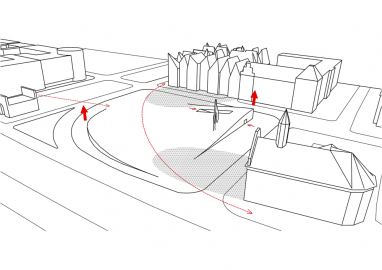National Museum in Szczecin - Dialogue Centre Przelomy
Project is an urban hybrid, which connects history of prewar quarter and postwar square. Design introduced order in that part of the city. Existing symbolic value was enriched witch recreational and social functions. In that result, new, democratic public space was created, connecting citizens of Szczecin.
Before the WWII location of our museum used to be a urban quarter. During the war, due to air raids, a quarter was destroyed. After war, an empty square accidentally appeared in place of a former quarter. In December '70, there were dramatic fights with militia with results of 16 deaths. Since those events, a square has became a symbol of the fight for freedom. Thus, an idea of a museum of the latest history of Szczecin in that place came up. Taking part in the competition, we knew that Philharmonic Hall, designed by Barozzi Veiga was meant to be built on the opposite side of the street, even then, we concluded, that this new building would become the new icon of the city. We took humble approach to the history and neighborhood of this place. That’s why idea to situate the museum under the ground, to create a architecture of the background.
A building is bringing together two contradictory traditions – prewar urban quarter and postwar square. That is how an urban hybrid was created – it encloses the space as a quarter, keeping the values of an open public space. Foregrounds were created in front of the philharmonic hall and the church, former quarter was marked on the opposite corners by smooth uplifts of the square. One of them contains a museum and another one works as a hill, protecting square from the busy street. As a result, an amphitheatric space of the square was created. Topography of the square encourages to skateboarding, skating or sledding. A square kept its symbolic character. Citizens understood, this is their square and they gather there to celebrate ora manifest ther opinions. Underneath the square there is a museum of the latest history of Szczecin. Due to collaboration with artists, historic museum became a museum of art.
The architecture follows topography, hence the museum's form is a continuation of the concrete floor of the square which is covered with rectangular tiles. In the elevated corner these tiles gain 3rd dimension, becoming cuboidal blocks. The whole makes a monolith that transforms when the museum opens. Some of the vertical plates rotate, thus creating the arcades unveiling two entrances. To emphasize monolithic character of the design, building is made from one material – concrete. Division of concrete floor matches the division of elevation and rotating walls. Materials used in construction came from local producers. Building is located in place of pulled down houses of former quarter, so that it doesn’t affect the neighborhood ground. We managed to preserve all the existing trees of the square. Placing the main part of the volume under the ground, where temperature is more stable, we limited the amount of energy consumption in winter and cooling in summer. To keep pure character of elevation and, primarily the square - due to its usable space, all installations were designed to be completly hidden. Therefore the square can be used without any limits.

